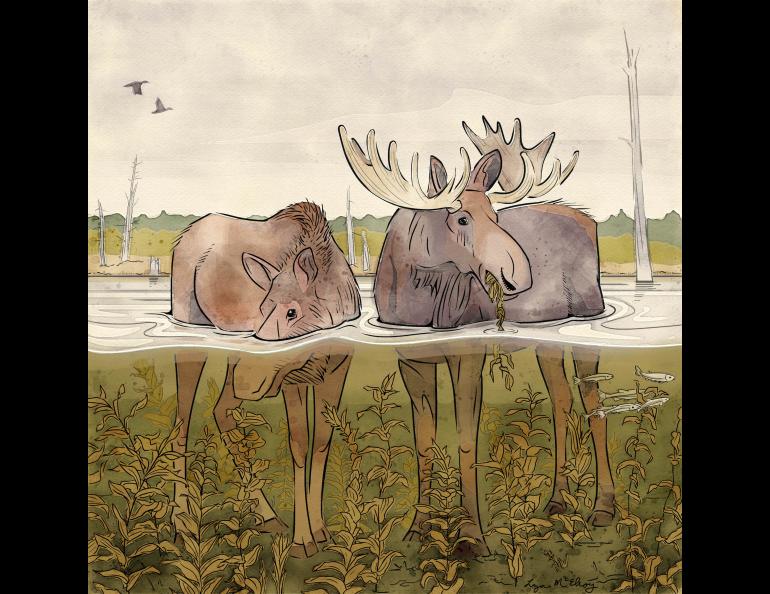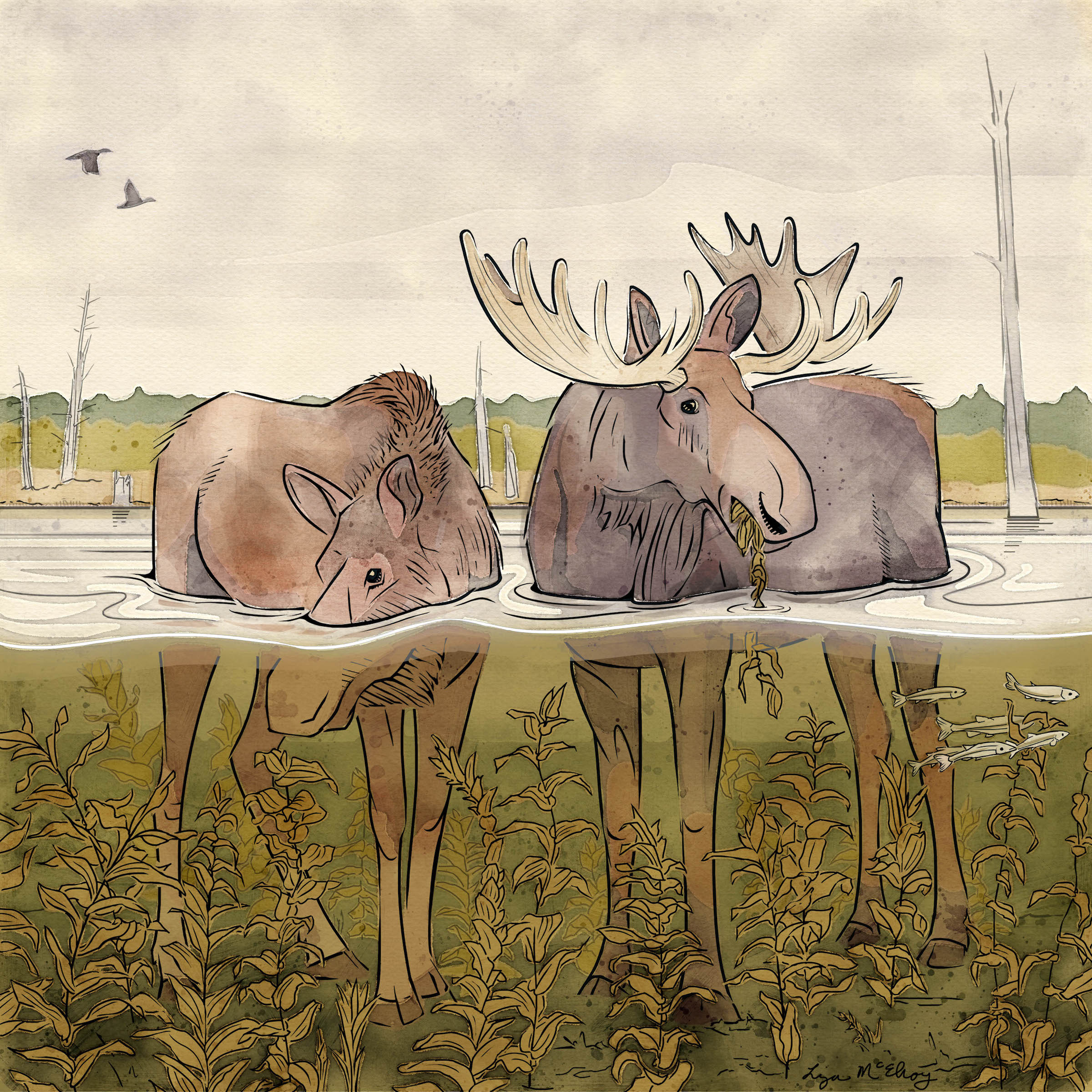
Why is a moose’s nose so big?
A scientist from Ohio once pondered why moose have such big noses.
Why might a scientist from Ohio care? It can tell a person about evolution, says Lawrence Witmer. Witmer is a biologist and professor of anatomy at Ohio University. As part of a study of unusual noses on dinosaurs and modern animals, Witmer and his colleagues examined the enigmatic nose of the moose.
Because moose disappeared from Ohio long ago, Witmer looked farther north for help. He found it in Newfoundland, Canada’s easternmost province. There, workers for the Department of Natural Resources shipped him four frozen heads of road-killed moose.
With mooseheads intact in his Athens, Ohio, lab, Witmer dissected the noses for a closer look, finding enough compelling information to write a paper that was published in the Journal of Zoology.
Before Witmer’s study, scientists had speculated on why the moose might have evolved such a long nose while other members of the deer family had relatively short noses.
One argument was that a long nose could help a moose shed heat from its huge body after running long distances to avoid predators. Witmer and his coworkers found this adaptation unlikely because few blood vessels exist near the outside surface of a moose’s nose, and moose are more apt to stand and fight predators than to try and outrun them.
Another reason a moose might have a big nose is to better sniff out predators or potential mates. Witmer found that idea had merit, and his attention soon turned to a moose’s nostrils.
Just like a person’s ears, a moose’s large nostrils point opposite directions. The wide spacing of moose nostrils might permit a moose to better locate smells, as our ears help us locate the direction of a sound and its distance. Witmer couldn’t rule out that moose use their unique nostrils for directional smelling, but all the complicated tissues that make up a moose’s nostrils suggested moose used them for something more — a set of valves that close automatically underwater.
“Animals like horses, dogs, and cats can’t close their nostrils,” Witmer said. “Closing your nostrils is a common aquatic adaptation, but you don’t see it in other members of the deer family.”
When a moose dips its head under water, the difference between the water pressure and the air pressure causes the nostrils to close, Witmer said. This adaptation, perhaps the main reason a moose’s nose is so long, allows a moose to feed underwater without water flooding into its nose, an unpleasant sensation even for two-legged, short-nosed mammals like us.





